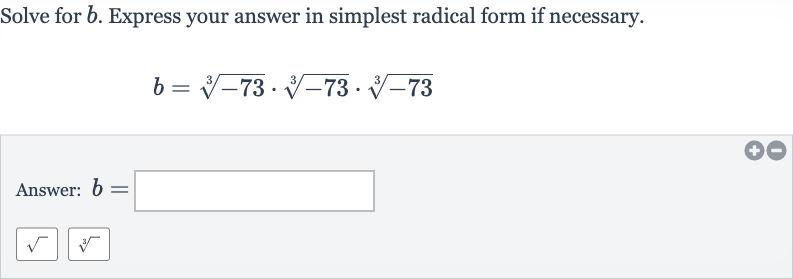Full solution
Q. Solve for . Express your answer in simplest radical form if necessary.Answer:
- Multiply radicands under cube root: We have . To simplify, we multiply the radicands together under a single cube root.
- Calculate radicand: . When we multiply by itself three times, we get .
- Final result: Calculating gives us .So, .
More problems from Multiplication with rational exponents
QuestionGet tutor help
QuestionGet tutor help
QuestionGet tutor help
QuestionGet tutor help
QuestionGet tutor help

